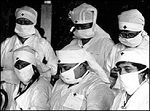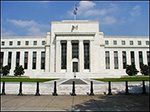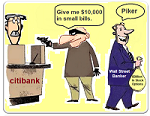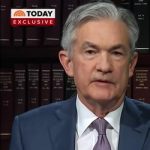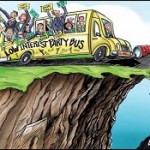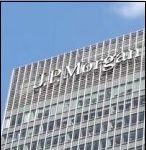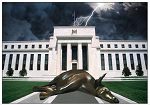From December 2007 through July 2010, the Federal Reserve secretly funneled $16.1 trillion in emergency revolving loans to the megabanks on Wall Street and their foreign counterparts at below-market interest rates. The Fed took this action without a single vote in Congress. The Fed then battled in court for more than two years to keep these unprecedented giveaways a secret from the American people. It lost on its arguments for secrecy at both the U.S. District and Appellate Court level. The U.S. Supreme Court declined to hear a related case advocating secrecy that was brought by a megabank front group, the Clearing House Association.
Instead of punishment for their corrupt actions that crashed the U.S. economy in 2008, the Wall Street megabanks were rewarded with secret bailouts.
The Dodd-Frank financial reform legislation of 2010 was supposed to stop these trillion-dollar giveaways from the Fed to the one percent on Wall Street. But the trillion-dollar bailouts at the Fed started up again on September 17, 2019 in the form of emergency repo loans.
The Fed’s emergency repo loan operations came months before the COVID-19 virus had emerged in China or anywhere else in the world. That strongly suggests to us that Wall Street megabanks had a serious problem independent of the virus outbreak.
Mainstream media refused to cover the repo loan bailouts in any depth, and censored the details when the Fed was forced under law to reveal that it had, once again, funneled trillions of dollars in revolving loans to Wall Street in the fourth quarter of 2019 and beyond.
The Fed’s multi-trillion-dollar emergency bailout programs from 2008 were reactivated again for the COVID-19 pandemic in 2020, marking the third massive bailout of Wall Street by the Fed in a dozen years. This is unprecedented in the 111-year history of the Fed, meaning the financial system of the U.S. is dramatically on the wrong course.
Wall Street On Parade views these Fed bailouts as an integral part of an institutionalized wealth transfer system from the 99 percent to the 1 percent. For our ongoing archive of articles on the Fed’s unprecedented bailouts, click on this text.
~~~~~~~~~~~~~~~~~~~~~~~~~~~~~~~~~~~



